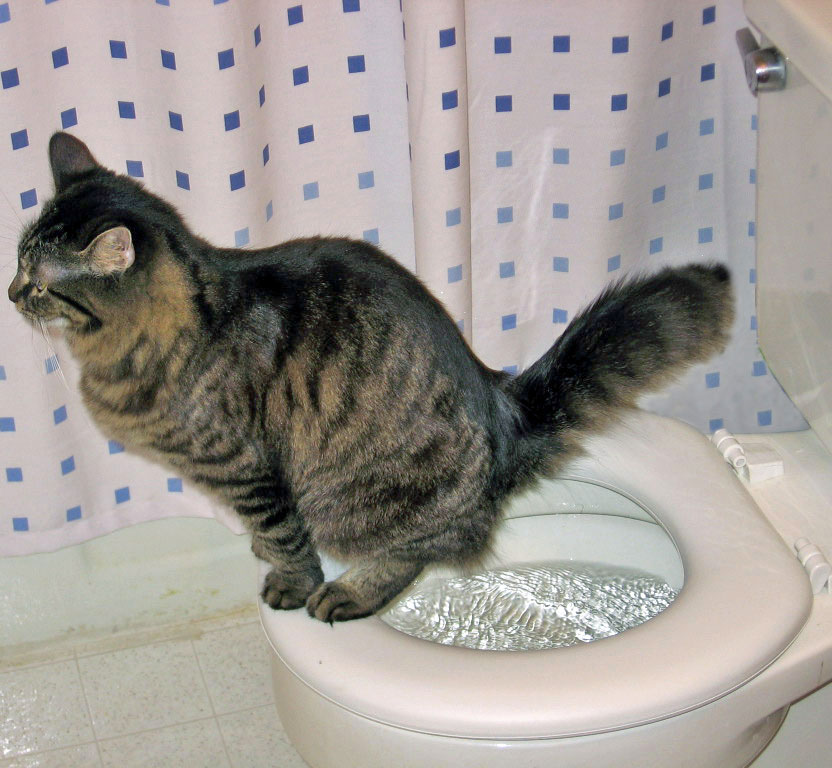Why Flushing Cat Poop Down Your Toilet May Cause Problems - Recommendations for Safe Disposal
Why Flushing Cat Poop Down Your Toilet May Cause Problems - Recommendations for Safe Disposal
Blog Article
Just how do you actually feel when it comes to How to Dispose of Cat Poop and Litter Without Plastic Bags?

Intro
As feline proprietors, it's vital to be mindful of how we get rid of our feline close friends' waste. While it might seem hassle-free to purge feline poop down the bathroom, this practice can have detrimental effects for both the atmosphere and human wellness.
Environmental Impact
Purging cat poop introduces damaging microorganisms and parasites into the water supply, posing a significant threat to water environments. These pollutants can negatively influence aquatic life and compromise water top quality.
Wellness Risks
In addition to ecological worries, flushing pet cat waste can likewise pose wellness risks to human beings. Feline feces might consist of Toxoplasma gondii, a bloodsucker that can trigger toxoplasmosis-- a possibly serious ailment, especially for expectant women and people with damaged immune systems.
Alternatives to Flushing
Fortunately, there are much safer and extra liable means to take care of feline poop. Consider the adhering to options:
1. Scoop and Dispose in Trash
The most common technique of dealing with cat poop is to scoop it into a naturally degradable bag and toss it in the garbage. Make certain to make use of a committed clutter inside story and take care of the waste quickly.
2. Use Biodegradable Litter
Select eco-friendly pet cat litter made from materials such as corn or wheat. These litters are eco-friendly and can be safely thrown away in the trash.
3. Hide in the Yard
If you have a yard, think about burying cat waste in an assigned area away from vegetable gardens and water resources. Make certain to dig deep enough to prevent contamination of groundwater.
4. Mount a Pet Waste Disposal System
Buy a pet dog garbage disposal system specifically created for pet cat waste. These systems use enzymes to break down the waste, lowering smell and environmental impact.
Conclusion
Responsible pet dog possession extends past offering food and sanctuary-- it also entails proper waste administration. By avoiding flushing pet cat poop down the toilet and selecting different disposal methods, we can lessen our ecological impact and safeguard human health and wellness.
Why Can’t I Flush Cat Poop?
It Spreads a Parasite
Cats are frequently infected with a parasite called toxoplasma gondii. The parasite causes an infection called toxoplasmosis. It is usually harmless to cats. The parasite only uses cat poop as a host for its eggs. Otherwise, the cat’s immune system usually keeps the infection at low enough levels to maintain its own health. But it does not stop the develop of eggs. These eggs are tiny and surprisingly tough. They may survive for a year before they begin to grow. But that’s the problem.
Our wastewater system is not designed to deal with toxoplasmosis eggs. Instead, most eggs will flush from your toilet into sewers and wastewater management plants. After the sewage is treated for many other harmful things in it, it is typically released into local rivers, lakes, or oceans. Here, the toxoplasmosis eggs can find new hosts, including starfish, crabs, otters, and many other wildlife. For many, this is a significant risk to their health. Toxoplasmosis can also end up infecting water sources that are important for agriculture, which means our deer, pigs, and sheep can get infected too.
Is There Risk to Humans?
There can be a risk to human life from flushing cat poop down the toilet. If you do so, the parasites from your cat’s poop can end up in shellfish, game animals, or livestock. If this meat is then served raw or undercooked, the people who eat it can get sick.
In fact, according to the CDC, 40 million people in the United States are infected with toxoplasma gondii. They get it from exposure to infected seafood, or from some kind of cat poop contamination, like drinking from a stream that is contaminated or touching anything that has come into contact with cat poop. That includes just cleaning a cat litter box.
Most people who get infected with these parasites will not develop any symptoms. However, for pregnant women or for those with compromised immune systems, the parasite can cause severe health problems.
How to Handle Cat Poop
The best way to handle cat poop is actually to clean the box more often. The eggs that the parasite sheds will not become active until one to five days after the cat poops. That means that if you clean daily, you’re much less likely to come into direct contact with infectious eggs.
That said, always dispose of cat poop in the garbage and not down the toilet. Wash your hands before and after you clean the litter box, and bring the bag of poop right outside to your garbage bins.
https://trenchlesssolutionsusa.com/why-cant-i-flush-cat-poop/

I recently found that write up about How to Dispose of Cat Poop and Litter Without Plastic Bags while surfing around the search engines. Are you aware of another individual who is in to the subject? Do not hesitate to share it. We cherish reading our article about How to Dispose of Cat Poop and Litter Without Plastic Bags.
Recurring Service Plans Report this page